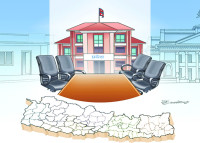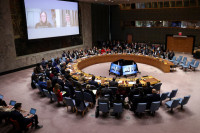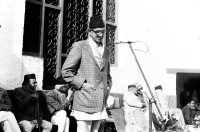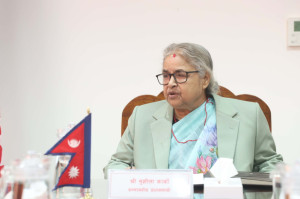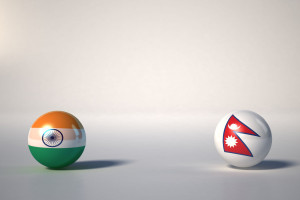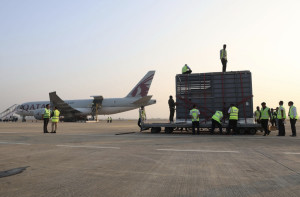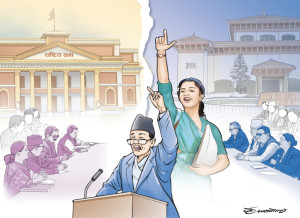Columns
Whither India-US relations?
Coercing India to tow the US line will certainly backfire on the bilateral relationship.
Smruti S Pattanaik
US President Donald Trump’s imposition of a tariff as a punitive measure on India for buying Russian oil has created a massive distrust between India and the US. The downward spiral started after Trump said that he brokered a ceasefire between India and Pakistan, a claim which has been countered by Indian officials several times. This was followed by Trump hosting a lunch for the Pakistani Field Marshal Asim Munir in the White House. The Trump family’s crypto business and Pakistan’s offer of critical minerals demonstrated that India must navigate Trump’s transactional relations. The bilateral trust so assiduously built by both India and the US after the 1998 nuclear test by India, the major milestone being the Indo-US nuclear deal, appears to be in doldrums as India has asserted that it will protect its national interest by buying Russian oil. India also exposed the US double standard when it revealed the value of the oil purchased by Western countries and China from Russia. While India had reduced imports of Iranian oil due to US sanctions on Iran, Western countries had praised India for its import of crude oil from Russia, which contributed to the global oil price stability.
Geopolitics of Russia-Ukraine war
Trump, who had promised to bring the Russia-Ukraine war to an end within 24 hours after taking over the presidency of the US, did not succeed, nor did his 50-day deadline to Russia to stop the war. Knowing the transactional nature of the Trump administration, both Russia and Ukraine also offered critical minerals to the US to win Washington over to their sides. Soon, the Israel-Iran war unfolded, diverting US attention. As the US and Western countries placed their attention back on the Russian war theatre, they searched for reasons to diminish Russia’s fighting capacity. In this context Russian oil trade with other countries of the world caught attention as sanctions failed to deter Russia.
NATO Secretary General, Mark Rutte, threatened India, China and Brazil for fuelling the war because of their import of Russian oil, which he accused funded the Russian war. BRICS also came under attack by Western countries. India joined Brazil as Trump imposed another 25 percent tariff on India, bringing the total figure to 50 percent. India described Trump’s tariff as ‘unreasonable’ and ‘unjustified’ as Prime Minister Modi said ‘India is ready to pay “heavy price” for its farmers.’ There are speculations that India’s GDP will shrink by 0.2 percent to 0.4 percent. To deal with Trump’s tariff, a long-term policy will be required. But it appears that talks have broken down between the two countries. It needs to be underlined that Russia has close security and defence ties with India and it is not about the import of crude oil only. India said, ‘EU conducted 67.5 billion euros ($78.02 billion) in trade with Russia in 2024, including record imports of liquefied natural gas (LNG) reaching 16.5 million metric tons.’ Russia accounts for 40 percent of India’s total crude oil imports and India’s export of refined Russian crude oil to Europe jumped by 58 percent in the first three quarters of 2024. Therefore, unsurprisingly, India labelled the US measures for importing Russian crude as hypocritical.
Multilateralising India’s engagements
India has placed renewed focus on its ties with China, Russia and Brazil after the recent dialogue between NSA Doval and Wang Yi in China. There are several imponderables in the bilateral ties with China, but both countries are trying to move forward, given the geopolitical exigencies posed by the Trump administration. In January this year, the two countries decided to resume Kailash-Manosarvor Yatra after a gap of six years and resumed people-to-people contact. Prime Minister Modi is likely to attend the SCO summit hosted by China, which will provide an opportunity for a high-level bilateral summit.
BRICS has also been at the receiving end of the Trump tariff. In July, Trump said, ‘Any country aligning itself with the Anti-American policies of BRICS will be charged an additional 10 percent Tariff.’ US has imposed a 50 percent tariff on both India and Brazil, both members of BRICS.
India is one of the first country that said ‘this is not the age of war’ and has now extended support to Trump-Putin meet at Alaska where Ukranian President Zelensky is supposed to be present but it is not clear whether Trump will manage to pressurise the two countries to reach a peace deal especially on the issue of ‘some swapping, changes in land’. The US has been speaking of land swapping between Russia and Ukraine for quite some time. Though a Russia-Ukraine peace is long-awaited, Russia has offered Trump with mineral deal and so has Ukraine. Though India is trying to expand its role in the Global South by moving from Sagar to Mahasagar, it is unlikely to accept Trump’s dikats, which New Delhi perceives as undermining India’s sovereignty and strategic autonomy. This is a historic trajectory that India has followed in its foreign policy and one of the most cited examples is the US approach to India during the 1971 war.
As the tariff war appeared to dominate the India-US bilateral relations, India sent its National Security Adviser to Beijing and Moscow to renew its relationship and send a message that India is not confined to its ties with the United States. Though Doval’s visit to China was to attend the 20th Meeting of the SCO Security Council secretaries, his meeting in Moscow was to further defence and energy security ties. These meetings taking place amid the tariff war are considered significant. India is also gearing up for Putin’s visit to India. In July, Russia had proposed to revive the trilateral format of Russia-India and China dialogue that has remained dormant for quite some time.
It appears that India-US relations will require time to gain the strength that a strategic partnership between the two countries offers. Distrust has crept into the bilateral relations. Further, the US cosying up to Field Marshal Munir, who did not hesitate to threaten nuclear war, has not gone down well with India. India, which has diversified its defence procurement sources and also indigenised defence production, which stood India in good stead during Op-Sindoor, will remain sceptical of US support. Coercing India to tow the US line will certainly backfire on the bilateral relationship. Public opinion in India will not allow the United States to leverage its strategic partnership with India in the background of the Trump administration’s rhetoric and actions.




 5.83°C Kathmandu
5.83°C Kathmandu
